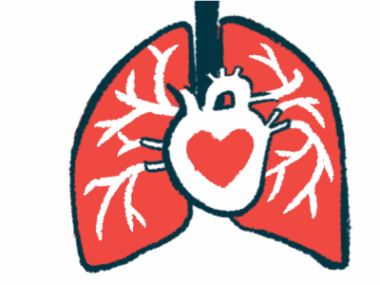Potential fatal heart problem risk in cardiac sarcoidosis varies by sex
More women affected by condition, but it may be more deadly for men
Written by |

Cardiac sarcoidosis affects slightly more women, but men with the disease are at higher risk of potentially fatal heart rhythm abnormalities, according to a study in Japan.
The findings suggest more aggressive preventive treatment for heart problems may be warranted for men with cardiac sarcoidosis, the researchers noted in “Sex differences in clinical characteristics and prognosis of patients with cardiac sarcoidosis,” which was published in Heart.
A feature of sarcoidosis is the formation of small clumps of inflammatory cells, called granulomas, in tissues and organs, which affect how they function.
When they form in the heart muscle, it’s called cardiac sarcoidosis and there’s an increased risk of potentially fatal ventricular arrhythmia events (pFVAEs) and sudden cardiac death. Ventricular arrhythmia are abnormal heartbeats due to problems in the heart’s lower chambers, or ventricles.
Cardiac sarcoidosis, much like whole-body sarcoidosis, disproportionately affects women. There hasn’t been much research into whether outcomes differ according to biological sex in this patient subgroup, leading scientists in Japan to analyze data from 512 people with cardiac sarcoidosis (64.2% women) who participated in a multicenter registry study called ILLUMINATE-CS (UMIN000034974).
Sex differences with cardiac sarcoidosis
“We believe this is the first study to evaluate sex differences in clinical characteristics and rates of ventricular arrhythmia or [sudden cardiac death] in patients with [cardiac sarcoidosis],” the scientists wrote.
The patients were a mean age of 61 upon entering the registry (baseline) and the peak age at a clinical diagnosis for both sexes was 60-64. The proportion of patients under 40 was markedly higher in men than women (10.4% vs. 1.8%), however.
At baseline, a little more than a third of patients (35.7%) were being treated with a cardiovascular implantable electronic device such as a pacemaker. Over a median follow-up of three years, more than half (56.4%) had such devices. The rates of using these devices, as well as of corticosteroids or corticosteroid-sparing agents, didn’t differ between the sexes.
At registry entry, men had higher rates of several heart-related health issues, including high blood pressure, ventricular rhythm problems, and coronary artery disease, which is caused by fatty molecules building up in the wall of the arteries that supply blood to the heart.
Differences between the sexes in the types of diagnostic tests that were typically run as part of an evaluation were also observed.
During the three-year follow-up, pFVAEs occurred in 16.1% of women and 25.1% of men. The risk of pFVAEs was significantly lower in women, statistical analyses showed.
This difference was mostly driven by the significantly higher frequency of sustained ventricular tachycardia, or abnormally high ventricular rhythm, in men (20.7% vs. 11.2%). The rates of cardiac sudden death were similar between the sexes (2.7%).
“Males were at a higher risk for pFVAEs than females,” the researchers wrote, adding that, while the reasons behind this aren’t fully clear, differences in underlying health issues, as well as other biological factors like hormones, may play a role.
The findings “suggest that sex-specific management may be reasonable in patients with [cardiac sarcoidosis], especially for the risk management of pFVAEs,” they wrote. These may include more aggressive preventive treatments, like implanting pacemakers earlier in men.
The analysis was limited to Japanese patients and didn’t include data on lifestyle factors like smoking or socioeconomic status, which may vary by sex and also affect heart health, the researchers said, adding more research is needed to “validate this association and clarify the mechanism underlying the sex differences in [frequency] and prognosis.”





